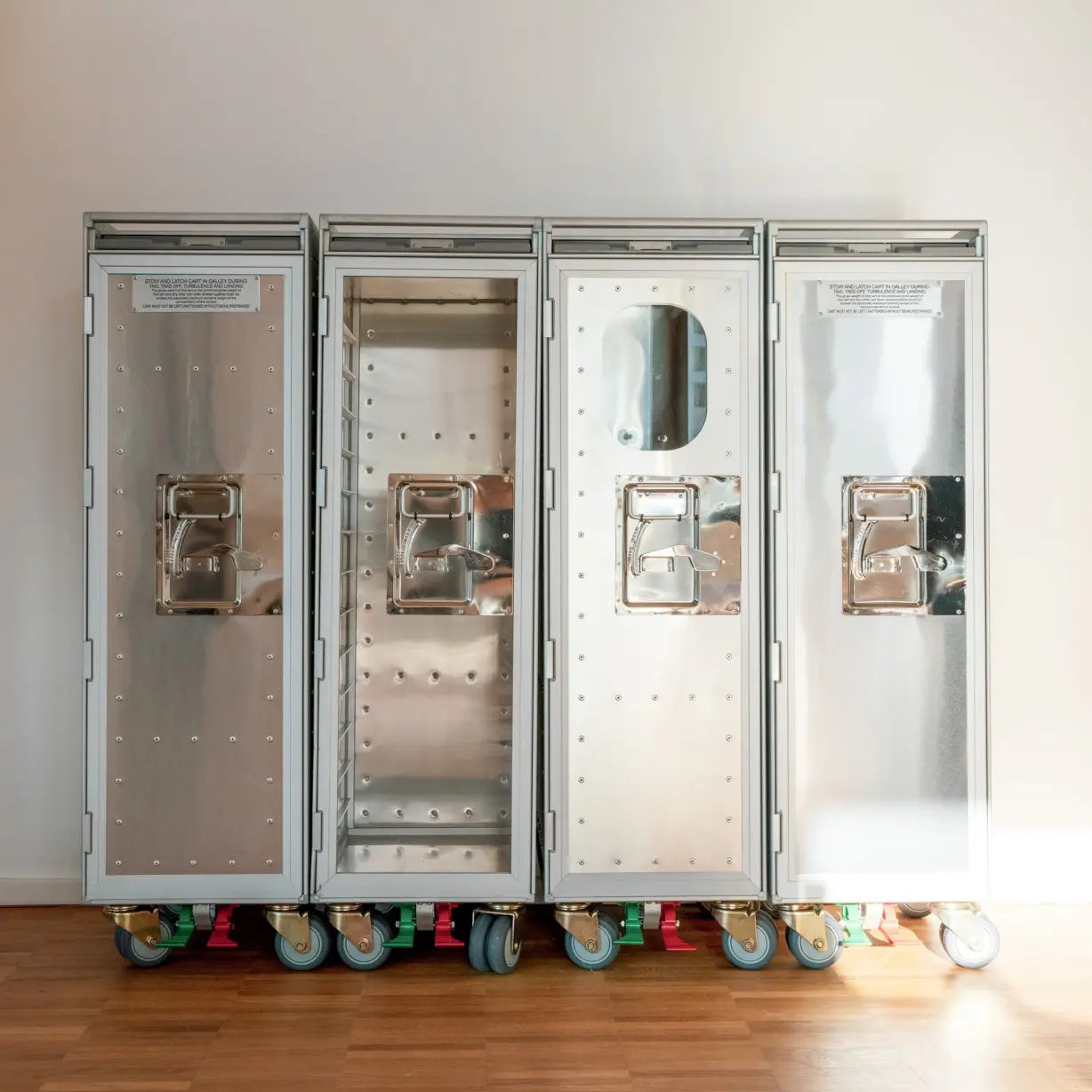From Fuselage to Fashion: The Eco-Conscious Trend of Aircraft Furniture
Evolving design trends often take a wild turn, intertwining luxury with sustainability. It’s seldom we see a more emblematic merger of these than in the burgeoning trend of crafting furniture from aircraft parts. The resurrection of old aircraft materials into sleek, sophisticated household pieces isn’t just about upcycling; it’s a statement about who we are as consumers and environmental stewards. In this opinion piece, I explore the appeal, the motives, and the future of this unique design trend, which speaks volumes about our commitment to the planet and our unabated passion for haute couture in our homes.
The Beauty of Repurposing
This modern interpretation of interior design goes beyond a passing trend; it embodies a deep reverence for the past intertwined with a forward-thinking approach. Reimagined fuselage wall bars and repurposed galley storage containers transformed into coffee tables introduce a strikingly theatrical aesthetic, infusing a hint of aviation legacy into the ambiance. There is a captivating allure in recognizing that these gleaming artifacts of 20th-century technology carry a history far removed from their current grounded state. It serves as a nostalgic tribute to the essence of flight, now ingrained in our everyday living spaces.
However, the appeal of aircraft-inspired furniture extends beyond mere nostalgia; it also champions environmental sustainability. Each piece, salvaged from potential landfill disposal, is granted a new lease on life. This design philosophy not only sparks engaging conversations but also provides a practical means for consumers to reduce their ecological footprint. When every single bracket, bolt, and screw contributes to reforestation efforts rather than landfill waste, it not only enhances aesthetics but also delivers a substantial environmental victory.
Sustainability in Design
The sustainability ethos in the manufacturing and design of aircraft furniture stands out as a guiding light in the often resource-intensive world of high-end design. By creatively repurposing remnants of decommissioned aircraft, designers not only access a rich array of unique materials but also establish a pioneering benchmark for sustainability and environmental stewardship within luxury design practices. This innovative approach not only showcases a commitment to eco-conscious practices but also underscores a profound dedication to reducing waste and promoting responsible consumption in the design industry.
We are currently observing a significant shift towards valuing sustainability without compromising on style. This movement represents a paradigm shift in the design landscape, emphasizing the importance of incorporating eco-friendly practices without compromising the aesthetic appeal of luxury products. It is a reflection of design thinking at its most refined, showcasing an artistic upcycling process that resonates deeply in a contemporary context dominated by growing sustainability concerns.
Functionality and Innovation
While much can be said about the emotional and ethical appeal of aircraft furniture, it would be remiss not to recognize its practicality. These pieces aren’t just relics or art; they're fully functional, often in ways that honor their original purpose. For instance, a Boeing 737-800 window might accent someone’s conversation area, while the retractable serving tray from a 747-400 could have a second life as a statement piece in the dining room.Challenges and Rewards
Every element of a repurposed aircraft furniture piece is meticulously planned, from the clean, modern lines that blend well in contemporary home settings to the durable quality that aviation parts bring. It’s a testament to the innovation of designers who repurpose these materials with a satisfying blend of history, functionality, and creative vision.
The ability of aircraft furniture to seamlessly merge the past with the present in home decor highlights the unique stories each piece carries. The nostalgia evoked by a salvaged airplane part can add character and intrigue to any living space, sparking conversations and admiration for the craftsmanship behind each repurposed item.
Crafting furniture from aircraft parts involves a unique blend of creativity and precision. Each piece must not only meet safety and quality standards but also reflect the structurally engineered nature of aircraft components. This demands a meticulous, specialized approach to ensure the integrity of the final product remains uncompromised.Personal Reflection
The end result surpasses mere functionality; it offers a piece of furniture that exudes luxury while also serving as an educational conversation starter. The process of repurposing aircraft parts into exquisite furniture not only enhances the aesthetic appeal of any living space but also conveys a deeper message of sustainability and innovation.
As the market for such furniture grows, it attracts a diverse group of enthusiasts who appreciate the narrative woven into each piece. Beyond the allure of owning a piece with a unique history, there's a growing emphasis on environmental responsibility. By opting for aircraft furniture, consumers not only embrace a contemporary aesthetic but also showcase their dedication to reducing their carbon footprint.
In essence, the value proposition extends far beyond the physical appearance of the furniture. It speaks to a broader ethos of sustainability, craftsmanship, and a passion for preserving the legacy of aviation in a creative and meaningful way.
The melding of luxury and sustainability resonates deeply with me. It is an embodiment of the values I strive to uphold in my personal life and my home environment. There is an innate joy in knowing that the coffee table that holds my morning cuppa is not just an exquisite piece of craftsmanship, but a symbol of my commitment to the environment. It sparks conversations that often lead to the sharing of ideas on how each of us can make a difference in our own ways.
The sense of connection to the history of aerospace innovation is equally compelling. The seats that may have once cradled astronauts before launching into the unknown now play a role in fostering cozy family evenings. There’s a poetic continuity in that juxtaposition that I find incredibly moving.
I also appreciate the thought that every item in my living space carries a story, whether it's the lampshade that once brightened up a writer's late-night work session or the rug that witnessed countless family gatherings. These pieces not only add to the aesthetics of my home but also weave together a tapestry of shared experiences and memories.
Conclusion
The trend of crafting furniture from aircraft parts is more than an expression of style; it’s an unequivocal statement of the growing demand for sustainable, high-quality design in our lives. This is luxury redefined – not by opulence alone, but by the narrative of stewardship and innovation that it embodies.
Through the growth of this trend, we're not just watching the emergence of a new aesthetic; we're also witnessing a shift in consumer priorities. It is a movement that’s inviting and rewarding enthusiasts who value rarity, history, and sustainability. This isn’t just a passing trend; it marks a new direction in high-end design – one that champions the earth while adorning the abodes of the discerning few.
In the sky once belonged to airplanes, the future of high-end design has found its wings. It’s sustainable, sleek, and poised to soar.



